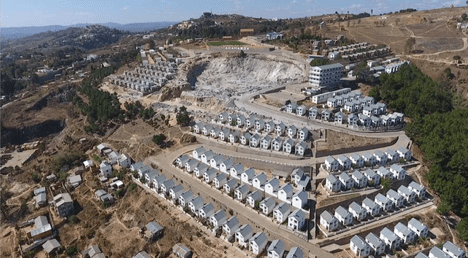Learning From a Vincentian Nobel Prize Nominee
A Vincentian priest has made it his life’s work to “go out to the margins” of society and try to restore dignity to the “living scraps” of a “throwaway culture”. Pedro Opeka CM, has been nominated for the Nobel Peace Prize… again.
“God’s Mason,” “Mother Teresa with Pants,” “God’s soldier,” “the Apostle of Garbage” and “the Revolutionary of Madagascar” are but a handful of the nicknames given to Father Pedro Opeka. He is also a recipient of France’s Legion of Honor and several papal awards.
“13 Houses Project” on steroids
He has been the “Good Samaritan” for so many in Madagascar, living literally in a huge garbage dump. These “garbage people” were among the “throw-away” society left by the wayside in a world fixated on the “good life”.
“Akamosoa”, a “solidarity movement to help the poorest of the poor, has provided homeless people and families with 4,000 brick houses”. It has also helped to educate 13,000 children and young people, according to Catholic News Agency.
He certainly should be an inspiration on steroids for the Vincentian Family’s “13 Houses Project”. Vincentians are in the midst of a world-wide effort to emulate St. Vincent’s 13 houses or projects for the homeless.
A city built arises from a question
“I saw hundreds of barefoot and dirty children, perhaps thousands, competing with pigs, rats and other vermin for food scraps in the garbage”. He knew he could not pass them by. So he went to learn what he could do.
But the locals asked: “Hey, white man, what do you want?” The bias against a “white” person in a country that still remembers the suffering from white colonizers was palpable.
He told those confronting him that he was a missionary priest and that he wanted to speak with them, but not “out here, invite me into your home.” By home, he meant a cardboard structure that was some three feet tall. He had to crawl on hands and knees to go in, and when they sat on the floor- a carpet of garbage- the roof was some 10 inches above his head. Certainly, not what Vincentians think of as a “home visit”!
That is when he asked the question that started it all. “Do you love your children?” “Of course!”, they said and began telling him of their dreams for them. Building on that sliver of common ground, “Let’s work together, give them a future.”
Father Pedro Opeka then taught the people how to divide and sort the rubbish, to sell the compost created from rubbish, and to create small agricultural farms. Akamasoa also trains construction workers (bricklayers, carpenters, cabinet makers, operators and street pavers) to build or repair the roads and bridges to help communities in the villages and all over the country. They have set up their own local government.
Forty years later the unfolding of this collaboration has been movingly told in a Beverly Hills Golden Palm award documentary
Oh yes, he was a student of Pope Francis. (1967-1968).
Lessons from a Nobel prize nominee
Systemic change:
- starts with meeting people where they are-– no matter where they are physically or spiritually-– and building relationships
- takes time-– in his case, decades
- requires inspiring people with a common dream– in this case the future of their children
- involves enabling people to accomplish that dream
Which of these lessons are we learning and working at?








As you often have and gently reminded us for our good, John, we need to see the need before us and do something to meet it.
The priest and the Levite in Jesus’ parable would rather not see the need of the man who was attacked by robbers and left half-dead. One from a hated race, however, saw and responded to the need.
Not that I’m saying that Opeka is from a hated race, but he surely is one of today’s good Samaritans. He saw the need, let others see it, too, and together they have been responding (responsibility) to the need. His mysticism, no doubt, is that of St. Vincent, whom Celestino Fernández, C.M., has characterized in his recent book, as a “mystic with eyes open.”
The obvious lesson for us, of course, is, “Go and do likewise.”